2020 Apple's autumn conference was held at the Jobs Theater on September 11.
At this conference, one detail is that the iPhones are all equipped with U1 chip that supports ultra-wideband (UWB) technology.
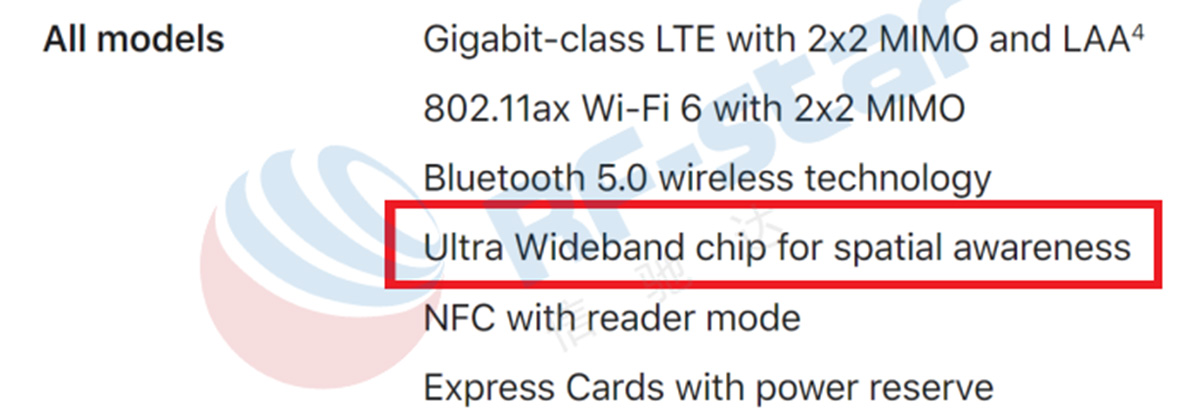
According to official publicity, the new technology will significantly improve the Spatial Awareness capabilities of Apple mobile phones.

So, what does spatial awareness mean? What exactly can the U1 chip do? What is UWB technology? All of these will lead to a new round of smart device application innovation?
The answers to these questions will be revealed next.
The Spatial Awareness is the ability to perceive orientation which is positioning ability.
According to Apple's introduction, iPhone equipped with the U1 chip further enhances the positioning function of the mobile phone. It can not only sense the location of its own mobile phone, but also the location of other nearby mobile phones.
Based on the space awareness capability provided by the U1 chip, when using AirDrop (AirDrop is the function of wireless file sharing provided by Apple devices), you only need to point your iPhone to someone else’s iPhone, and the system will prioritize it (the closer you are, the higher the priority), allowing you to share files faster.
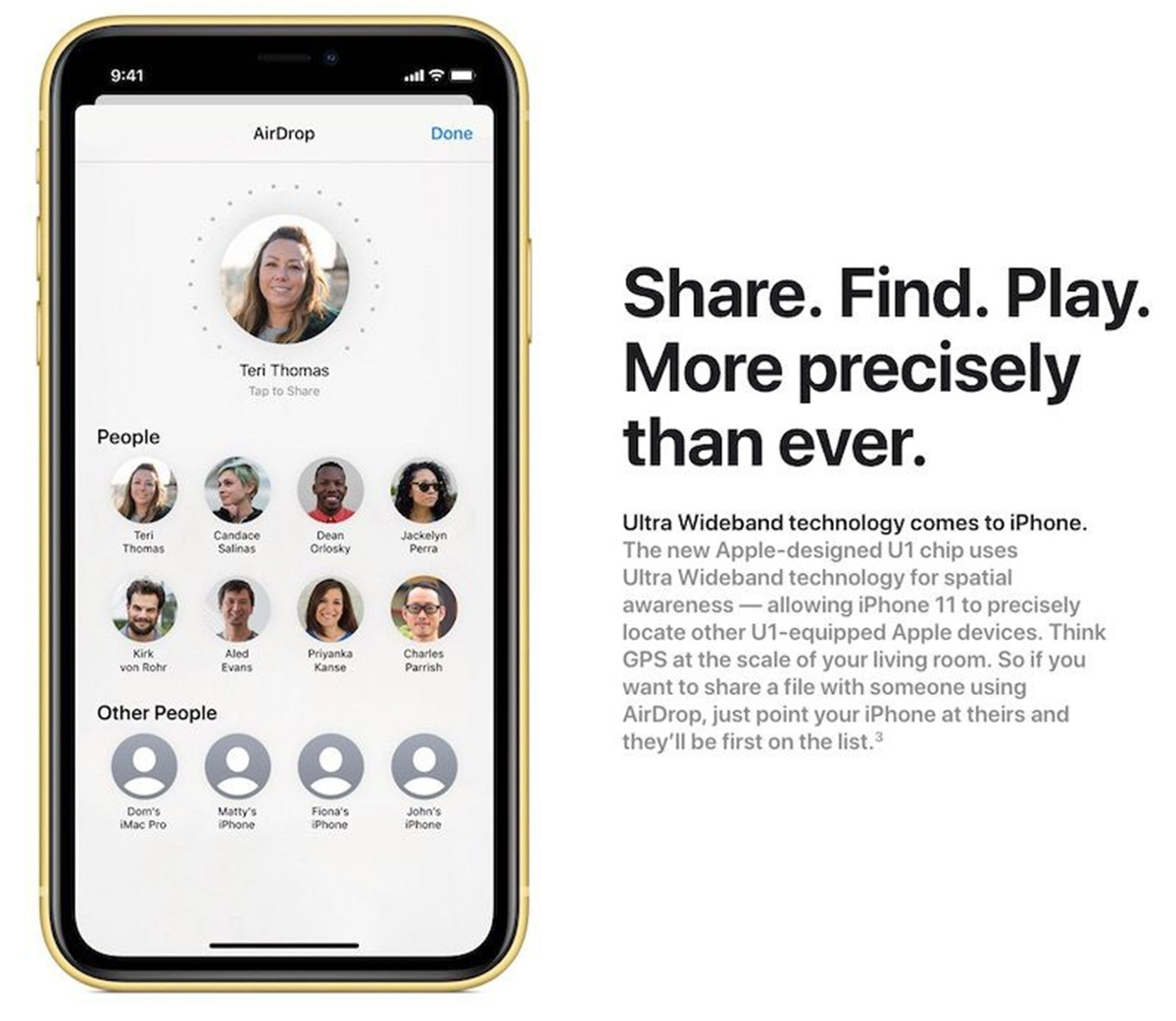
iPhone11 can achieve the application effect of "the closer you get to me, the first you get a response".
Positioning is a familiar topic for all of us. We often use APPs such as Google Map or Baidu Map, which have positioning and navigation services.
Location services help us indicate directions and increase our sense of security as well as control, which bring great convenience to our work and life.

Therefore, what is the difference between UWB technology and the positioning technology we use now?
The commonly used positioning technologies now mainly include satellite positioning and base station positioning.
Satellite positioning is a technology that uses artificial earth satellites to perform point position measurement. And it is currently the most widely used and most popular positioning technology for users. The characteristics of high precision, fast speed and low cost of use are very prominent.
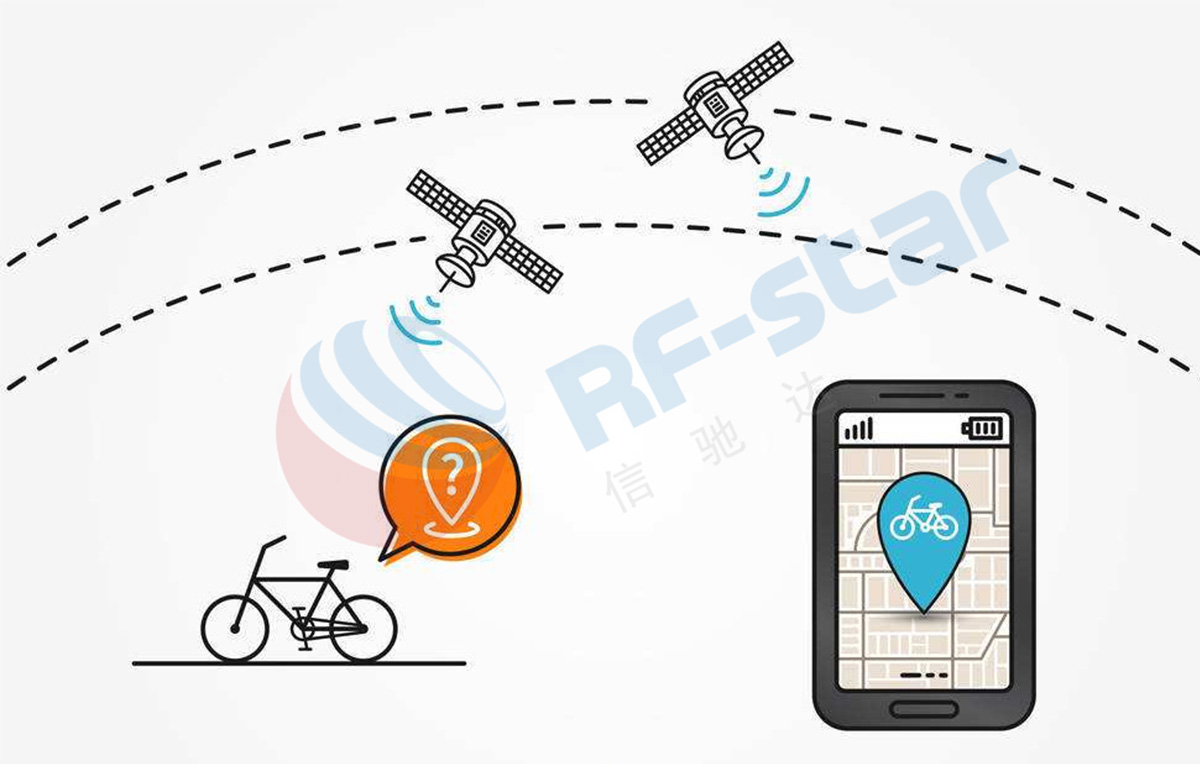
The well-known satellite positioning systems include the United States’ Global Positioning System (GPS), China’s Beidou (BDS), Europe’s Galileo, Russia’s GLONASS.
The principle of base station positioning is similar to radar. Radar positioning is to emit radar waves and perform spatial position measurement based on the reflection of the target.

The base station works like a "radar".
Usually, a mobile phone will be under the signal coverage of multiple base stations in a city. The mobile phone will "measure" the downlink pilot signals of different base stations to obtain the signal TOA (time of arrival) or TDOA (time difference of arrival) of each base station.
According to the measurement result, the coordinates of the mobile phone can be calculated combined with the coordinates of the base station,
Here is a picture to show it.

All of the above-mentioned positioning methods have an obvious shortcoming. They cannot penetrate buildings and cannot achieve indoor positioning.
Satellite positioning requires the receiver to receive enough satellite signals. When entering the room or obstructed, the satellite signal is very weak and cannot be effectively positioned.
When we are outdoors, the GPS positioning signal received by the mobile phone can reach more than 15. When we are indoors, the GPS positioning signal received by the mobile phone indoors may be less than 3.
It can be known that when the number of satellites decreases, the positioning error increases from 10 m to 66 m.
On the one hand, satellite and base station positioning technology cannot meet the needs of indoor positioning. On the other hand, there is an increasing demand for indoor positioning, such as underground garage navigation, shopping malls to find shops and goods, and even to find lost children.
Thanks to the rising demand, people have developed a series of technologies to try to use other types of anchor nodes to provide positioning capabilities. It includes Wi-Fi, Bluetooth, UWB and other technologies.
What is UWB?
Wi-Fi and Bluetooth are not big news to us. So, what is UWB?
UWB is an ultra-wideband technology, which originated from the pulse communication technology that emerged in the 1960s.
The general communication system uses a high-frequency carrier to modulate a narrowband signal, and the actual bandwidth occupied by the communication signal is not high.
UWB is different from traditional communication technology, it realizes wireless transmission by sending and receiving extremely narrow pulses with nanosecond or microsecond magnitude. Due to the extremely short pulse time width, ultra-wideband on the spectrum can be achieved, and it is above 500 MHz.
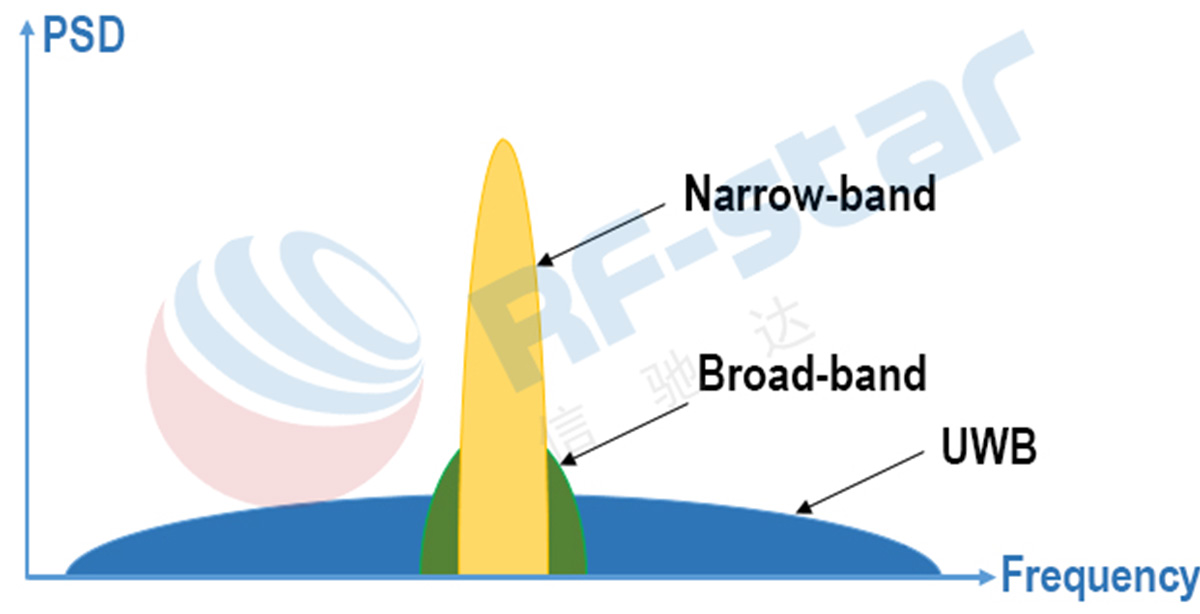
The FCC (Federal Communications Commission) has allocated a total of 7.5 GHz from 3.1 GHz to 10.6 GHz for UWB. They also imposed stricter limits on its radiated power than FCC Part15.209 UWB is limited to the -41.3 dBm frequency band.
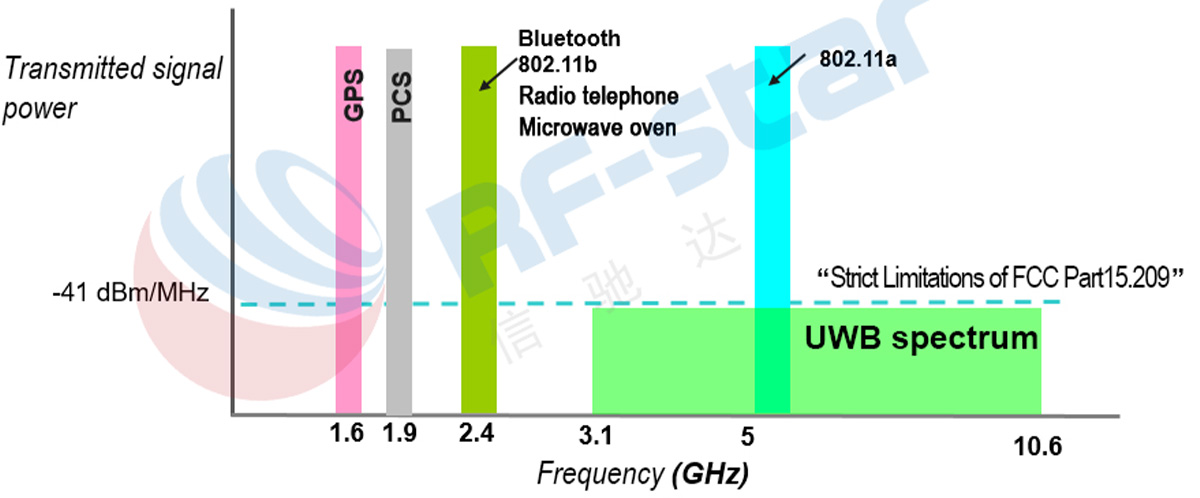
In short, UWB achieves fast data transmission with low power consumption through ultra-large bandwidth and low transmit power.
Due to the extremely short time width of UWB pulses, high-precision timing can also be used for distance measurement.
Compared with Wi-Fi and Bluetooth positioning technology, UWB has its own advantages.
Based on the above technical advantages, UWB can form a high-precision indoor positioning system.

Comparison of UWB and other positioning technologies
At present, there are three commonly used UWB ranging methods.
(1) ToF (Time of flight). Range measurement is achieved by measuring the flight time of the UWB signal between the base station and the tag.
(2) TDoA (Time Difference of Arrival). UWB signal is used to locate the time difference from the tag to each base station.
(3) PDoA (Phase Difference of Arrival). The azimuth relationship between the base station and the tag is measured by the Angle of arrival phase.
UWB industry development
UWB was widely used for military purposes before 2002. In 2002, the FCC lifted the ban on UWB technology and allowed it to enter the civilian field.
Since then, UWB technology has entered a period of rapid development, and various technical solutions have also launched fierce competition around the formulation of UWB international standards.
In 2007, IEEE standardized UWB technology in the 802.15.4a standard. After nearly 10 years of development, UWB standards are constantly improving.
Decawave must be mentioned in the UWB industry chain.

Decawave is currently the only UWB positioning chip manufacturer known to support IEEE 802.15.4. They offer low-cost chips at a retail price of a few dollars. The chip is DW1000, which complies with the IEEE 802.15.4-2011 UWB standard protocol (under ideal conditions, the maximum measurable range is 300 m).

After Apple’s product launch, INTRANAV, a positioning manufacturer based on the Decawave chip DW1000, posted two tweets claiming that its kit supports interoperability with iPhone11, and Decawave also reposted the tweet. This shows that Apple U1 has a great possibility of supporting IEEE 802.15.4.
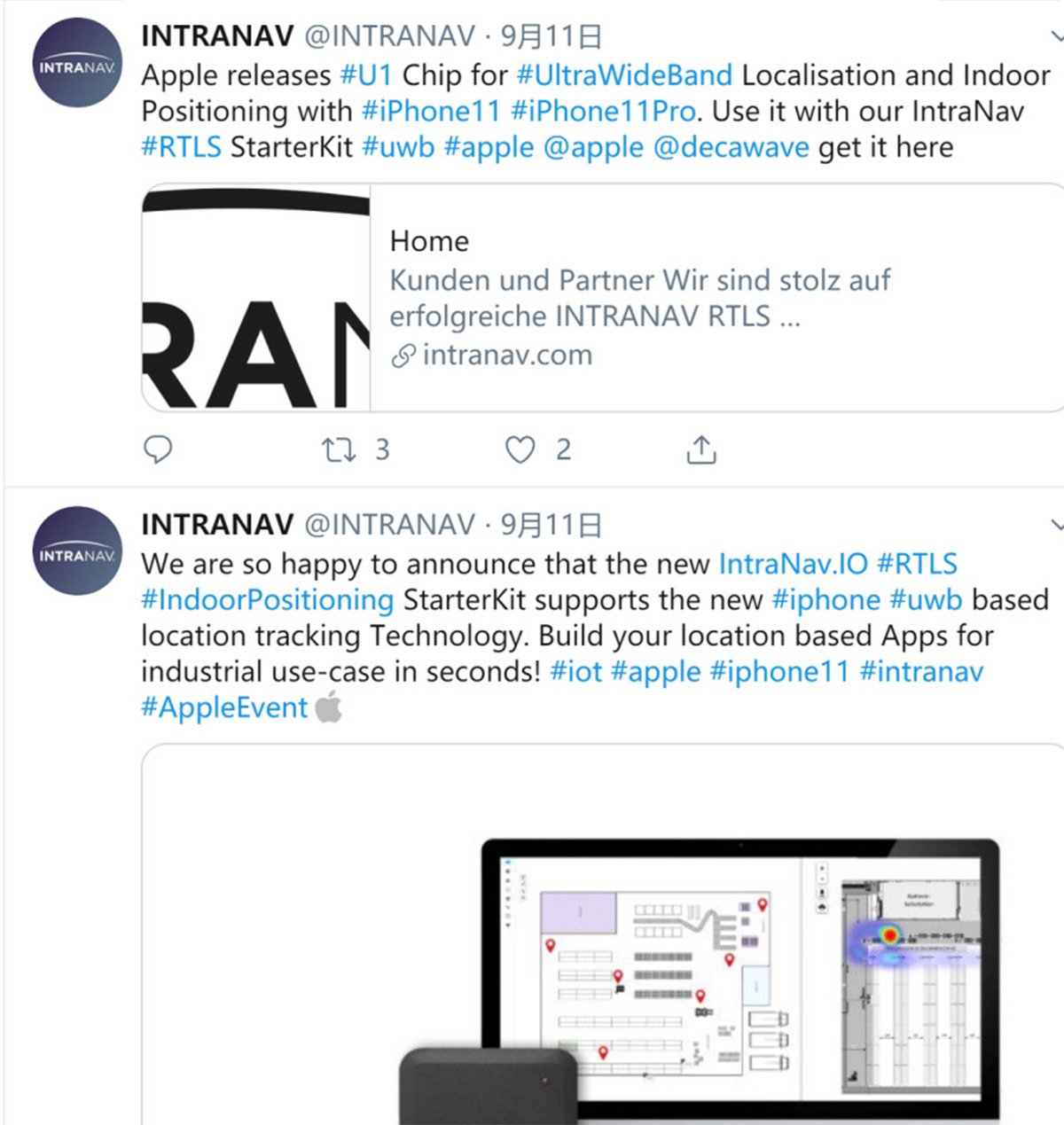
Other manufacturers engaged in UWB technology include Ubisense and BeSpoon. These manufacturers use their own UWB solutions, which are usually launched in the form of a module kit, but none of them support IEEE 802.15.4.
The realization of better Spatial Awareness requires the support of the application ecology. In order to build the entire application ecosystem, devices from different manufacturers need to achieve interoperability and compatibility. It is foreseeable that devices from all manufacturers will likely support the IEEE 802.15.4 standard in the future.
UWB positioning effect
Currently, there are three high standard indoor positioning competitions in the world,
1) Microsoft Indoor Localization Competition (MILC)
2) PERFLoc (Performance Evaluation of Smart-phone Indoor) organized by the National Institute of Standards and Technology (NIST)
3) International Indoor Positioning and Indoor Navigation Conference (IPIN)
Microsoft's MILC competition is recognized as the best stage for judging high-precision indoor positioning technology.
The following is a list of the top three results based on the infrastructure group in the MILC competitions over the years.
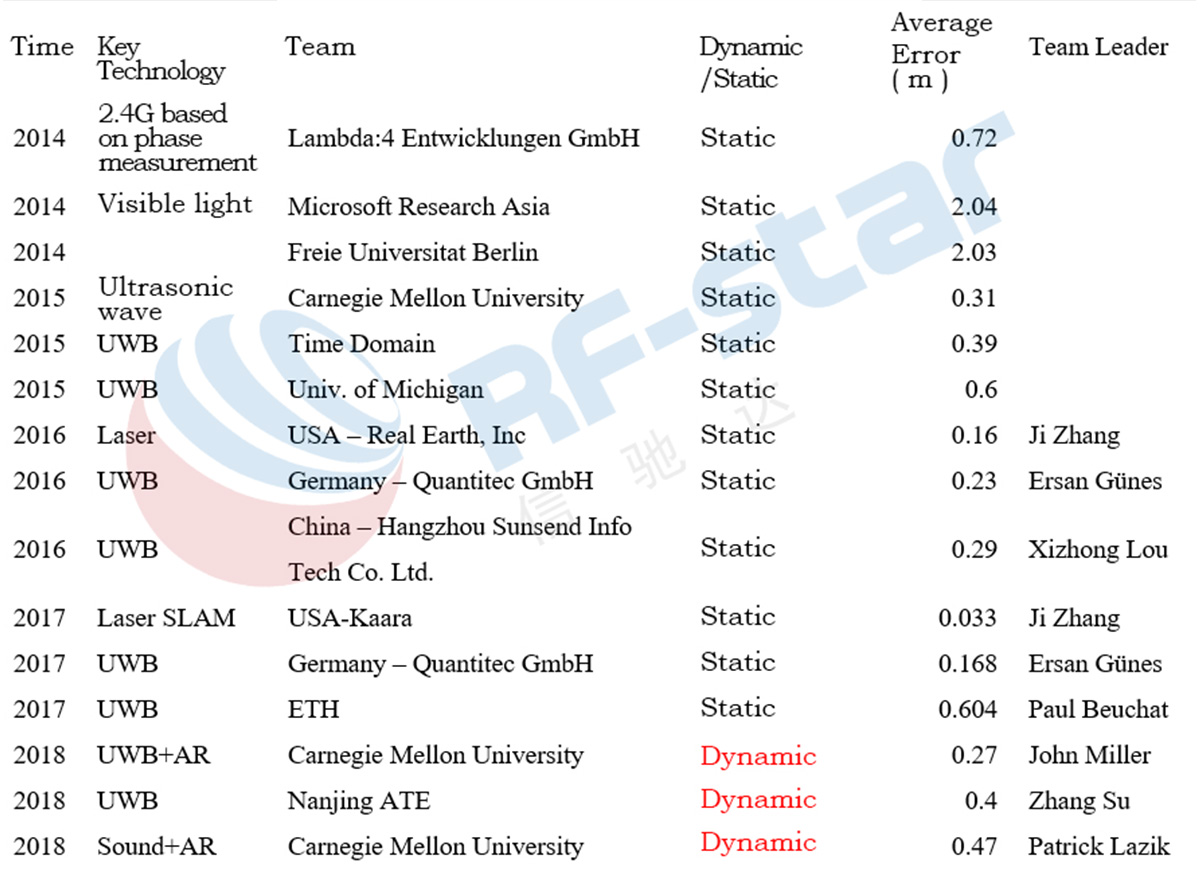
It can be known that since 2015, the advantages of UWB have gradually been shown, and has become the most promising technology in high-precision positioning technology. At the same time, Decawave's DW1000 is also the mainstream choice in specific positioning solutions. 7 of the 8 winning UWB teams have used the DW1000.
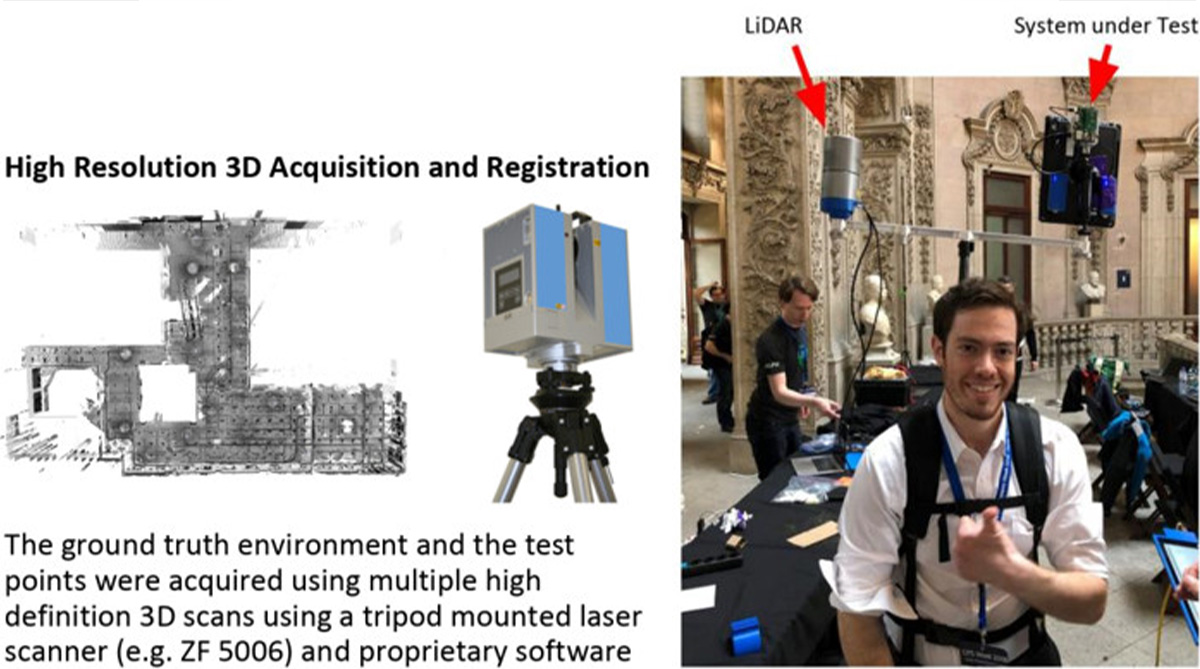
Na competição de 2018, um SLAM a laser de alto desempenho foi usado para construir um mapa (imagem à esquerda) e com base nessa saída em tempo real da trajetória da posição real (à direita), que foi usada como base de avaliação para o jogo.

O local do jogo é o Palácio da Bolsa de Valores do Porto, Portugal, e o ambiente é bem complicado.
A competição de 2018 foi a primeira a avaliar a precisão dinâmica. O local da competição era muito complicado e os resultados muito orientados. Neste evento, merece destaque a equipe de Anthony Rowe, da Carnegie Mellon University, nos Estados Unidos. Esta equipe é líder no campo de posicionamento interno. eles entraram no top três 3 vezes. Em 2018, eles ficaram em primeiro lugar e empataram em segundo.
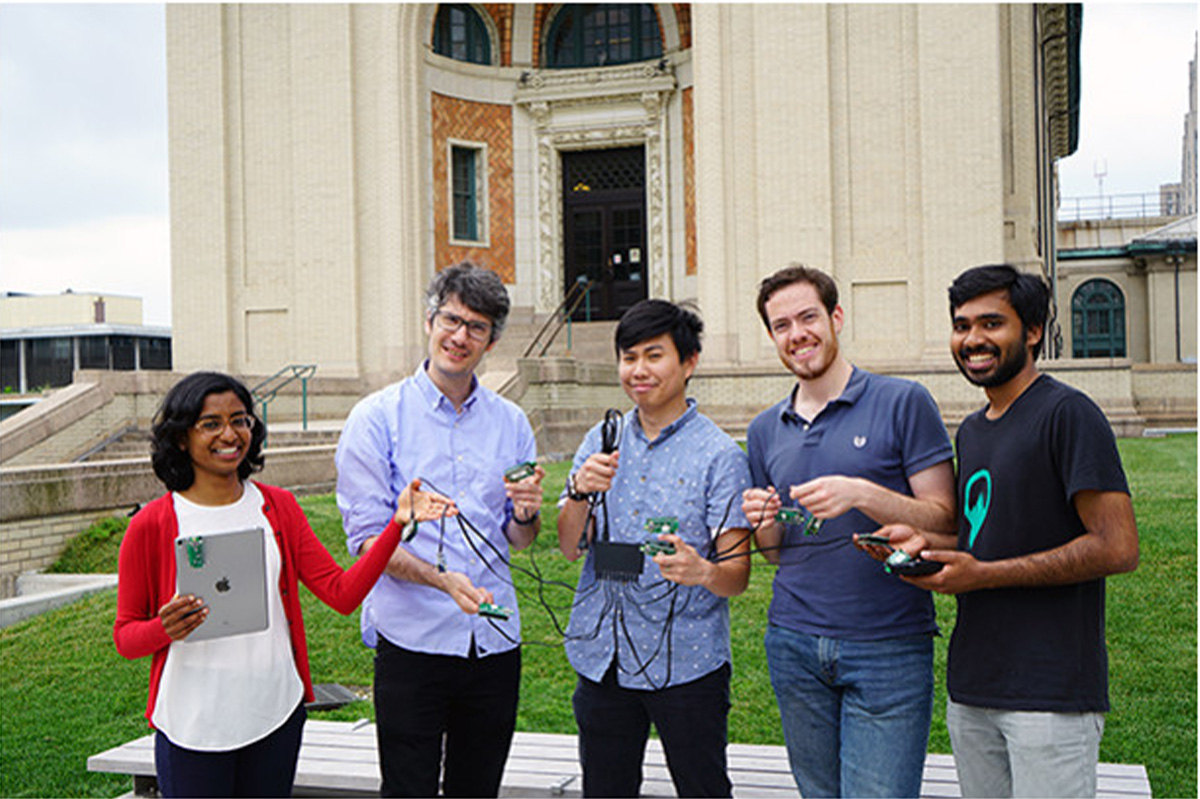
Equipe CMU Anthony Rowe
Mais importante ainda, a rota técnica pela qual a equipe conquistou o primeiro lugar em 2018 é UWB + Realidade Aumentada (AR), e o iPhone 11 Pro se tornou o primeiro telefone celular compatível com AR e UWB. Isso prova que a equipe tem um forte conhecimento técnico.
Além disso, a Nanjing ATE Electronic Technology Co., Ltd. da China também merece atenção.
Eles são uma equipe emergente. Um ano depois de entrar no mercado UWB, eles participaram da competição de 2018 e empataram em segundo lugar. Esta é a melhor classificação da seleção nacional neste evento até agora.
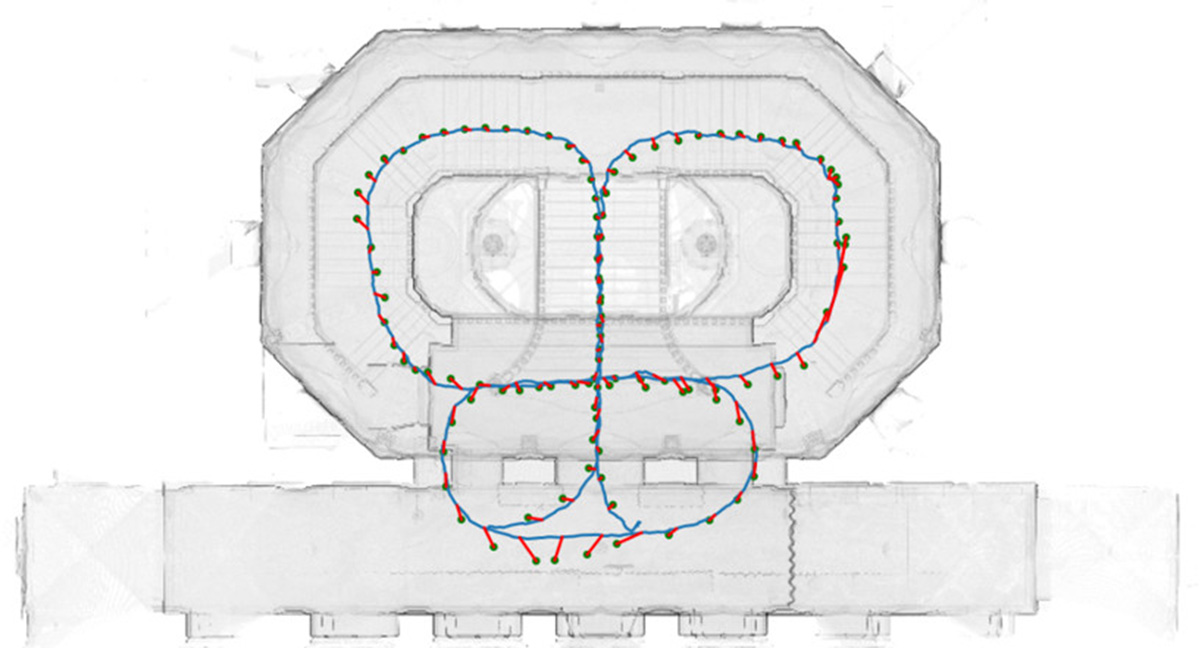
A imagem acima é a trajetória em tempo real produzida pela equipe ATE durante a competição. Pode-se observar que, com exceção de algumas áreas, a maioria das áreas possui coordenadas de posicionamento de saída com alta precisão. O azul é a trajetória em tempo real do laser SLAM, o ponto verde é a saída da trajetória pela equipe ATE e o vermelho é o erro do vetor.
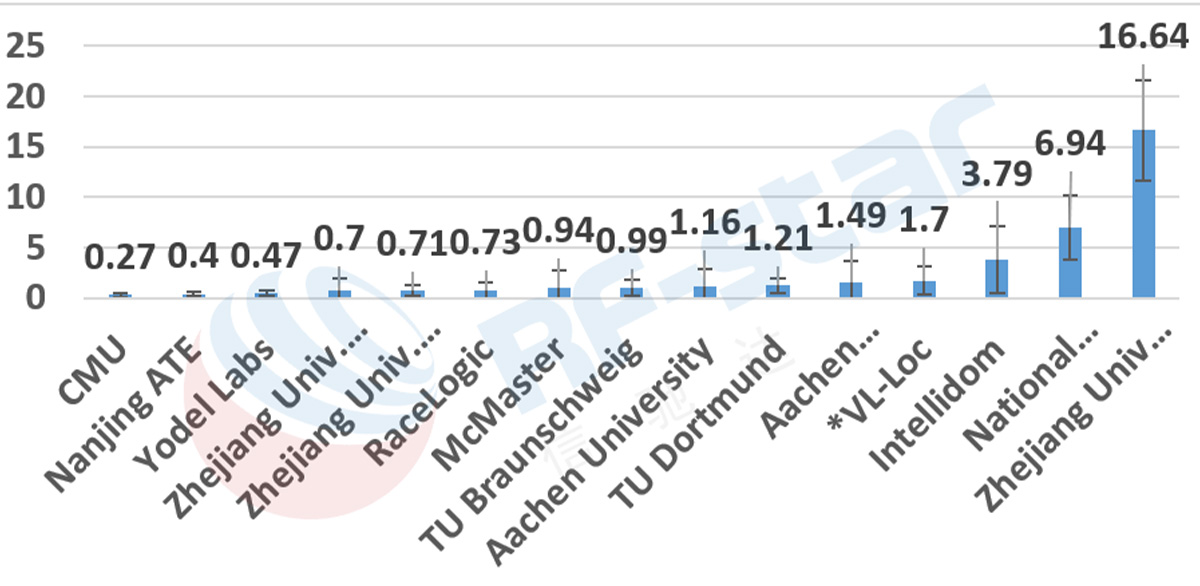
A imagem acima é uma comparação dos erros médios de posicionamento das equipes participantes. O erro médio de posicionamento da equipa ATE é de 0,4 metros.
No entanto, várias equipes fortes tradicionais, como Racelogic e Russian Research Institute, que também usam a tecnologia UWB, alcançaram apenas perto de 1 metro ou até pior. Isso ilustra totalmente a dificuldade da corrida de 2018.
Resumo
Em suma, o suporte abrangente do iPhone para UWB é uma oportunidade muito valiosa para a promoção comercial em larga escala. Ele também acelerará o desenvolvimento e a maturidade da cadeia da indústria upstream e downstream UWB.
Com o advento do 5G, estamos acelerando para a era da internet de tudo, e cada vez mais dispositivos e aplicativos IoT aparecerão. A tecnologia UWB pode ser integrada a esses aplicativos IoT de acordo com suas próprias características para fornecer aos usuários uma melhor experiência de serviço.
A tecnologia UWB tem perspectivas de desenvolvimento muito amplas, incluindo casa inteligente, AR, pagamento móvel, rastreamento de enfermagem, prospecção geológica, navegação interna, etc.
De acordo com as previsões das agências relevantes, a tecnologia UWB ocupará 30% ~ 40% do mercado de posicionamento interno no futuro, e o tamanho do mercado deve atingir 16,4 bilhões de dólares americanos em 2022.
Vamos aguardar o futuro brilhante da UWB.